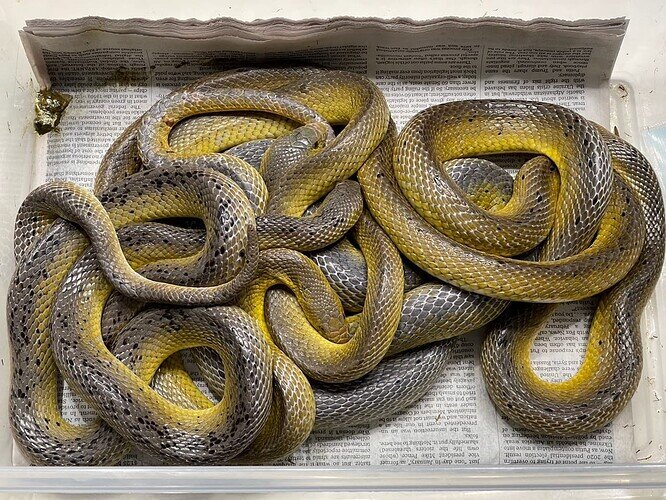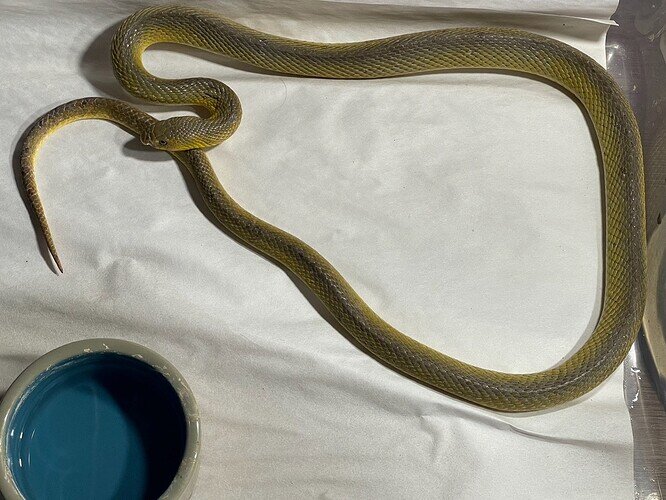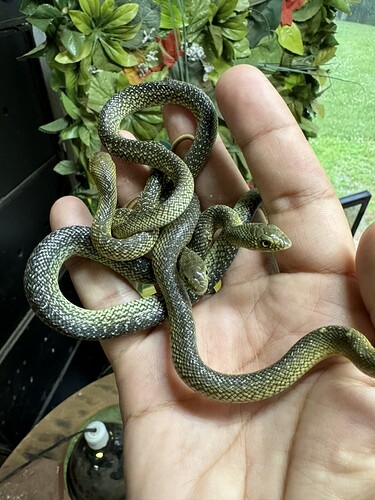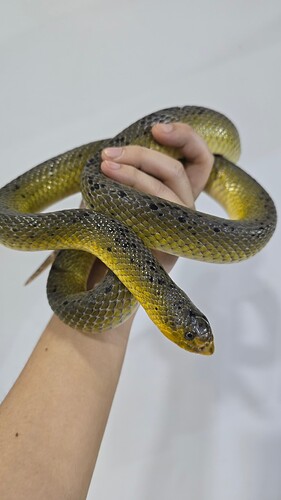No worries, and yeah the lack of information on them was part of the stress of keeping them lol.
For size, my biggest was a female who hit somewhere around 5’3" I’d want to say? I never got a precise measurement for her, but she was long enough I placed her in a 6’ x 2’ x 2’ enclosure and she could fully stretch out in it. She was around 800 g at her healthiest, but she lost some of the weight after she too developed cataracts. I believe she was fairly old by the time I got her, just from observing how large and scarred up she was, how her movement was like, and how fast she developed cataracts.
From the few papers I’ve read, and from what mine would take, they seem to be primarily rodent eaters. In captivity mine would take f/t mice, rats, gerbils, and hamsters. They outright refused anything else and didn’t seem to register them as potential prey. Maybe people have gotten them to successfully take other prey, but that was not my experience.
They’re mainly terrestrial snakes, and excellent burrowers. The nose of theirs really helps! And based from what I’ve seen of their skulls, they have what appears to be fused bony plates (I do not know the anatomical term for these, sorry) forming their “beak” and the top of their heads. I have given mine some climbing opportunities, but they rarely utilized them. They did seem to like hiding under the fake plants I’d drape over the branches though for a more shaded/dappled hiding spot effect, especially after they ate. Mine seemed to be more active during the day, so I’d say they are diurnal. I’d rarely catch them being active in the evening or night, once the lights were out they’d go hide and I wouldn’t see them until the morning.
I guess medically wise, I’ve used febendazole, praziquantel, oxfendazole, metronidazole, and Natural Chemistry’s Reptile Relief on them. A few of mine had adverse reactions to metronidazole despite my vet and I using a lower concentration than what was formerly recommended to me (I’ve had to medicate Malpolon before, not fun). They got super lethargic, then showed neurological symptoms, and died rather quickly so for the other imports I got I skipped using metro all together. Many of my Scaphiophis came in rough shape so I was also struggling to get them rehydrated on top of heavy hookworm and coccidia infestations. Like @t_h_wyman and others I’ve spoken with, these snakes seem really affected by stress so it feels like a time race against the odds. I’ve had two also die from a really strange bacterial infection that managed to make its way into the snake’s central nervous system, but mostly in the brain. The strangest part to me was they were only in my care for 2 days, and for all appearances looked fine to me - nothing out of the ordinary. And unfortunately in my own and someone else’s experience, they’re also spunky enough to keep throwing threat displays until they reach a point of no return. If a Scaphiophis isn’t a little spicy (this even includes huffiness), then something is wrong with them.
I know someone who had a group doing relatively well last time I spoke to her. I wish her the best, this species isn’t easy to keep and I think she lucked out in the gamble of getting fairly healthy imports.



